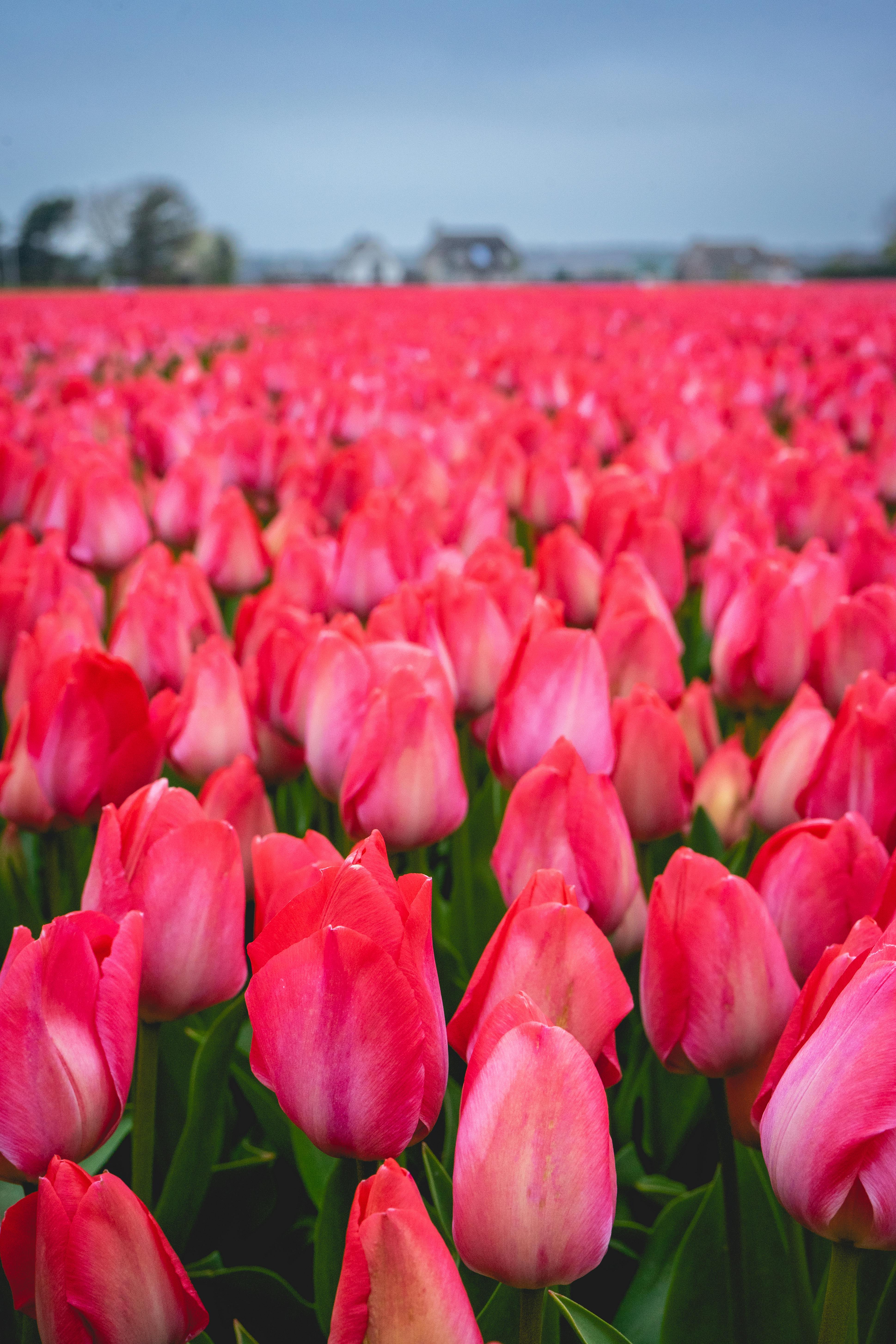Effective Ways to Plant Tulip Bulbs in 2025: Discover Smart Techniques for Gorgeous Blooms

Tulips are one of spring’s most enchanting flowers and serve as perfect additions to any garden. Their vibrant colors and various shapes make them appealing to gardeners and enthusiasts alike. However, achieving spectacular blooms requires understanding how to plant tulip bulbs effectively. This article delves into essential guidelines for planting tulips, focusing on the best practices, ideal conditions, and care techniques to ensure that your tulip garden flourishes in 2025.
The benefits of tulip bulbs go beyond aesthetic appeal; they also mark the arrival of spring and can enhance your garden's biodiversity. This guide will explore the best time to plant tulip bulbs, how to prepare soil for tulips, and tips for caring for your tulips throughout their growing cycle.
Here’s what you can expect in the following sections: We will discuss crucial aspects, including tulip bulb planting depth and spacing, watering needs, and pest control strategies. Additionally, we’ll cover how to enjoy tulip blooms in various garden designs. By the end, you will have a comprehensive understanding of tulip gardening, setting the stage for a stunning display of color in your landscape.
Essential Guidelines for Planting Tulips Successfully
To lay the groundwork for a successful tulip garden, understanding how to plant tulip bulbs is critical. Proper preparation will lead to vibrant blooms and a healthy garden.
Choosing the Right Tulip Bulbs
When selecting tulip bulbs, aim for high quality. Look for firm, plump bulbs without any signs of mold or damage. Consider the various tulip bulb types available, which include Darwin hybrids and fringed tulips, each bringing unique aesthetics to your garden. Understanding your gardening zone and climate is vital, as different tulip varieties thrive at various temperatures.
Determining the Best Time to Plant Tulip Bulbs
Knowing the best time to plant tulip bulbs is essential for ensuring optimal growth. In most regions, fall planting is recommended to give bulbs time to root before winter. Early autumn is ideal, as it allows for cooler soil temperatures that encourage root development. When you're aware of the expected first frost date, you can plan accordingly to ensure your bulbs are planted in time.
Preparing Soil for Optimal Growth
How to prepare soil for tulips includes several steps. Start by testing your garden soil's pH level; tulips prefer a slightly acidic to neutral pH between 6.0 and 7.0. Amend the soil with organic matter, such as compost, to improve drainage and nutrient availability. Good drainage is crucial because tulip bulbs are susceptible to rot in waterlogged conditions. Using a garden fork, loosen the soil to allow for proper bulb positioning.
After preparation, aim for a loamy soil mix enriched with well-composted organic materials for the best results. This ensures that your bulbs will have the nutrients and drainage they need throughout their growth.
Understanding Tulip Bulb Planting Depth and Spacing
Getting your tulip bulb planting depth and spacing correct is vital for their health and aesthetic appeal. Each bulb variety may require different depths, and spacing will influence the overall appearance and health of your tulip garden.
Ideal Planting Depth for Tulip Bulbs
The recommended tulip bulb planting depth generally is about three times the height of the bulb. For example, if your bulb is 2 inches tall, plant it about 6 inches deep. This depth protects the bulbs from temperature extremes and encourages robust root growth. Remember to loosen the soil at the bottom of the hole to promote easy root expansion.
Proper Spacing for Healthy Tulip Gardens
Tulip bulb spacing plays a pivotal role in your garden's success. Ideally, space your bulbs about 4-6 inches apart to avoid overcrowding. This spacing ensures that each plant receives adequate sunlight and nutrition, preventing competition for resources. When designing your garden, consider grouping tulips in clusters for a more natural, flowing look.
Avoiding Common Planting Mistakes
As you learn how to plant tulip bulbs, it’s essential to know common mistakes, such as not planting deep enough or overcrowding. Ensure bulbs are planted with the pointed end facing up, as this promotes proper growth. Additionally, remember to water bulbs right after planting to stimulate their growth, but avoid saturating the soil over the following weeks.
Caring for Tulip Bulbs: Watering, Feeding, and Pest Control
Once your tulip bulbs are in the ground, proper care is crucial for ensuring vibrancy and full blooms. This section will cover watering needs, fertilizing practices, and methods to control pests that might threaten your bulbs.
Understanding Tulip Bulb Watering Needs
Tulip bulb watering needs vary depending on the growing stage. While bulbs should stay moist during initial growth, it’s crucial to avoid waterlogging. After flowering, reducing water helps the foliage die back naturally, which is essential for bulb health. Monitor the moisture levels in the soil: if it feels dry an inch below the surface, it's time to water.
Utilizing Tulip Bulb Fertilizers for Growth
When it comes to tulip bulb fertilization, a slow-release, balanced fertilizer is recommended early in spring as the tulips begin to emerge. This will help support their growth. Tools like bone meal or all-purpose fertilizers can also provide the nutrients your tulips require to thrive. Remember to avoid excessive fertilization, as this can damage the bulbs.
Effective Tulip Bulb Pest Control Strategies
Pest control is a significant aspect of tulip bulb care. Common pests include aphids and bulb mites that can harm your bulbs. Implementing natural pest control methods such as neem oil or insecticidal soap can help keep these pests at bay without harming beneficial insects. Regularly inspecting your plants will allow you to catch any issues early, ensuring your tulips remain healthy and vibrant.

Aftercare for Tulip Bulbs: Enhancing Growth Post-Bloom
Aftercare for tulip bulbs is essential to store their energy for the following year. Many gardeners overlook this stage, resulting in less robust blooms in subsequent seasons. Following proper aftercare techniques can preserve the beauty of your tulips for years to come.
Post-Bloom Care Strategies
Once tulips finish blooming, allow the foliage to die back naturally. This process is essential for the bulb to store energy for the next flowering season. Cutting the green leaves prematurely can hinder their growth. During this phase, provide adequate watering to help the bulbs absorb nutrients from the dying foliage.
How to Store Tulip Bulbs for Future Planting
For gardeners who want to save bulbs for replanting, it’s crucial to store tulip bulbs correctly after the flowering season. Remove bulbs from the soil once the foliage has yellowed. Clean them gently and allow them to dry completely before placing them in a cool, dark area. This storage method ensures their viability for the next planting season.
Benefits of Tulip Bulbs and Garden Health
Tulip bulbs not only offer beautiful blooms but also provide various benefits to your garden. They promote biodiversity, support pollinators, and add visual interest to your landscape. Consequently, investing time in learning how to care for tulip bulbs enriches not only your garden but also the surrounding ecosystem.
Conclusion: Enjoying Your Tulip Blooms in 2025
By following this comprehensive guide on how to plant tulip bulbs, you are now equipped with the knowledge needed to create a stunning display of tulip flowers. From choosing the right bulbs to proper planting techniques, watering, and aftercare, you have all the tools for success. Remember that patience and care are essential as you enjoy the beauty of tulips blooming season after season.
For more information regarding effective gardening, check out [this article](https://helphow.info/?p=2067) and [this resource](https://helphow.info/?p=2062). Happy gardening!
